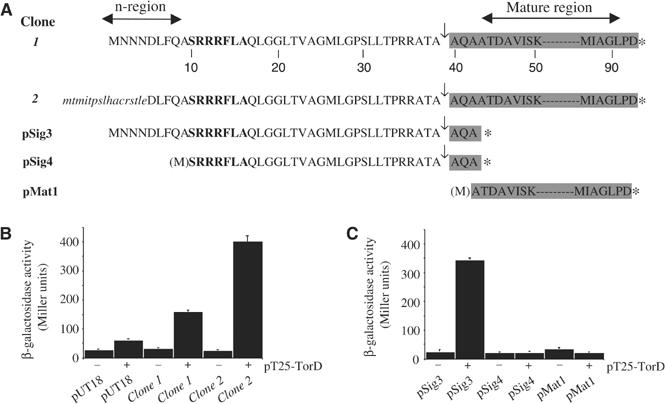Figure 3.

TorD interacts with the TorA signal peptide. (A) Amino-acid sequences of N-terminal TorA fusions to the adenylate cyclase T18 fragment. All TorA-specific residues are shown in upper case and the twin-arginine motif is shown in upper bold case. Residues are numbered from the extreme N-terminus of clone 1. For the clone 2 sequence, residues derived from the lacZ′ gene on the vector are shown in lower case italics. Signal peptidase cleavage sites are indicated by the arrows. Fusion junctions with the T18 fragment are indicated by the asterisks. Sequences corresponding to the mature TorA protein (signal peptide cleaved) are shaded. (B) TorD interacts with the N-terminus of TorA. Interactions were measured between pT25 plasmid (‘−') or pT25-TorD expressing the TorD fusion (‘+') and either pUT18 or the library isolates clone 1 and clone 2 in the reporter strain BTH101. (C) TorD recognises the TorA signal peptide. Interactions were measured between pT25 plasmid (‘−') or pT25-TorD expressing the TorD fusion (‘+') and the engineered fusions to the complete signal peptide, pSig3, the signal peptide lacking n-region, pSig4, and 49 residues of the mature TorA protein, pMat1, in the reporter strain BTH101.
